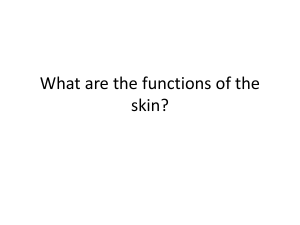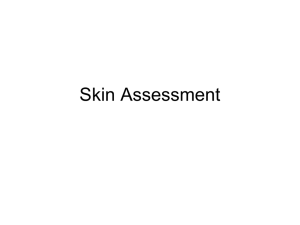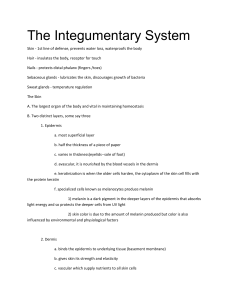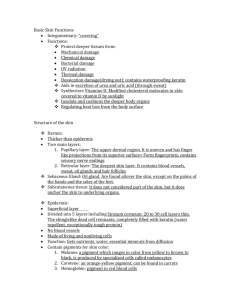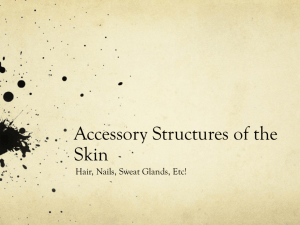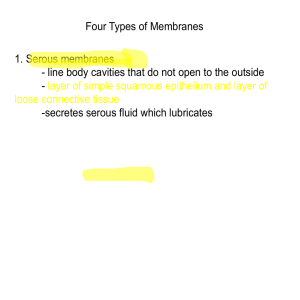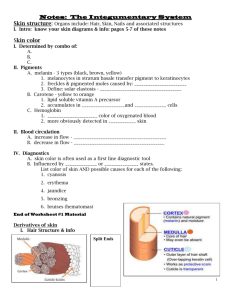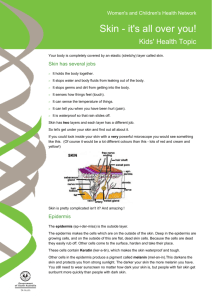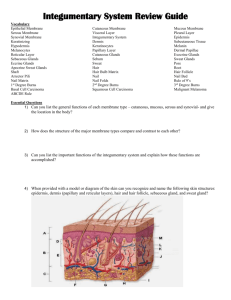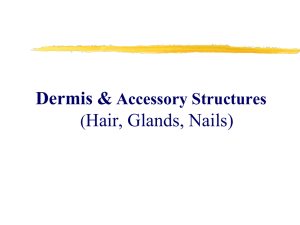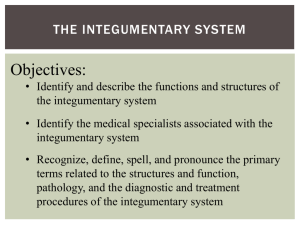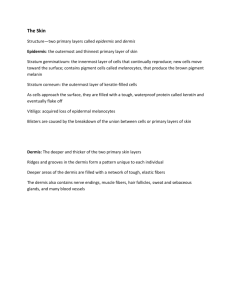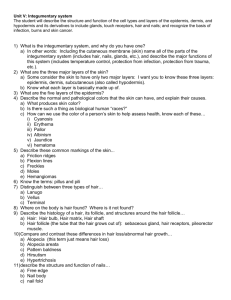Accessory Organs of the Skin
advertisement
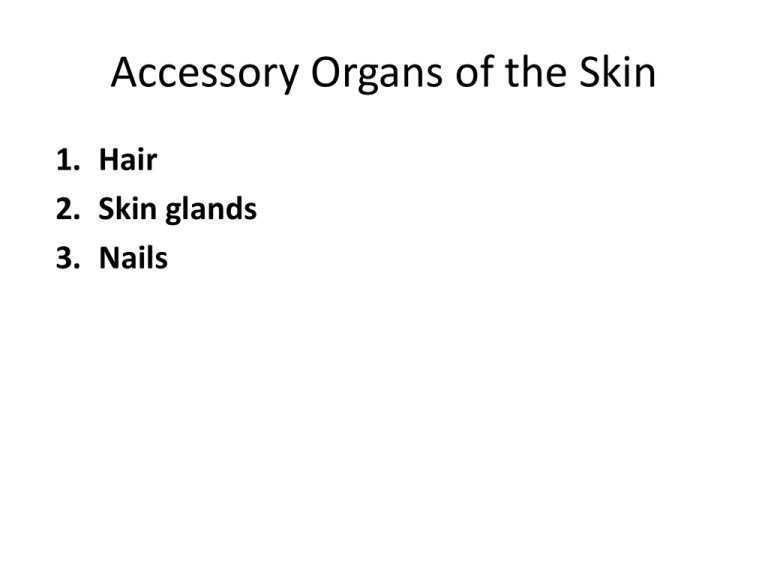
Accessory Organs of the Skin 1. Hair 2. Skin glands 3. Nails 1. Hair A. Forms from epidermal cells B. Housed in the hair follicle C. 2 distinct sections 1) Shaft – portion that projects from skin surface 2) Root – deep portion penetrating the dermis D. Arrector pili muscles 1) Smooth muscle attached to each hair follicle 2) Contract when stimulated by cold or nervous impulses, pulling hair up straight and causing goosebumps E. Hair root plexus – dendrites of neurons that are sensitive to touch 2. Skin Glands A. Sebaceous glands 1) 2) 3) 4) “seb ” = grease Oil-producing (Why do we want this?) Usually associated with hair follicles in the dermis Keep hair and skin soft, pliable, and waterproof B. Sudoriferous glands 1) “sudori ” = sweat; “ferous ” = bearing 2) 2 main types a) Eccrine – secretes cooling sweat directly onto the skin b) Apocrine – stimulated during stress/excitement; secreted into hair follicles 3) Modified sweat glands a) Ceruminous (“cer ” = wax) – external ear canal b) Mammary –- milk-producing 3. Nails • Made of tightly packed, keratinized (???) epidermal cells • Consists of: – Nail body – visible portion – Free edge – part that extends past the end of the digit – Nail root – portion buried in a fold of skin – Lunula (“little moon”) – crescent-shaped area of the nail Functions of Integument 1. Protective covering – Prevents water loss – Keeps microbes and contaminants out 2. Cutaneous sensation – gathers information of environment 3. 4. 5. 6. Excretion and absorption Synthesis of vitamin D Wound healing Temperature regulation Temperature Regulation • When body temperature is too high: – Blood vessels in the dermal area dilate, so heat can be released to the environment. – Sweat glands are stimulated, and the evaporating sweat cools the body. • What happens when the body is too cold?


